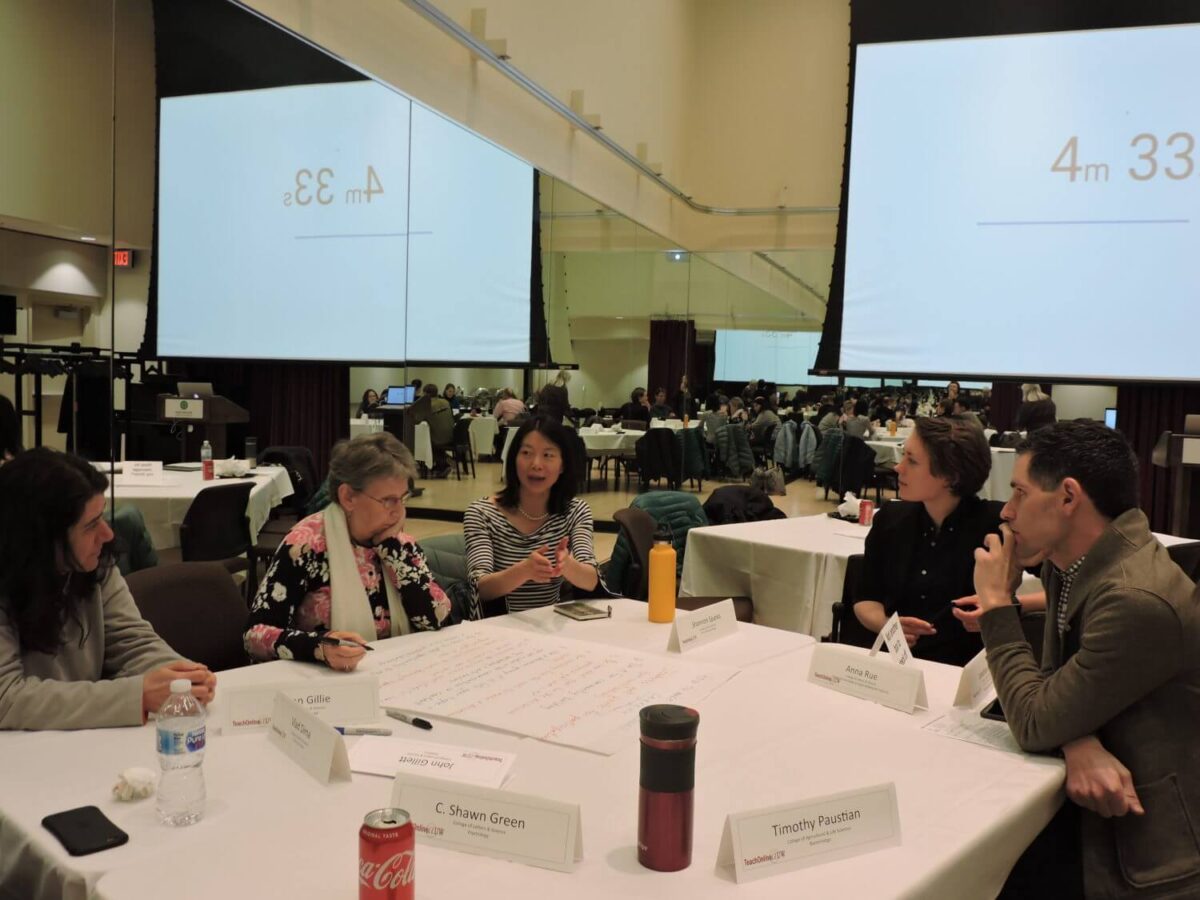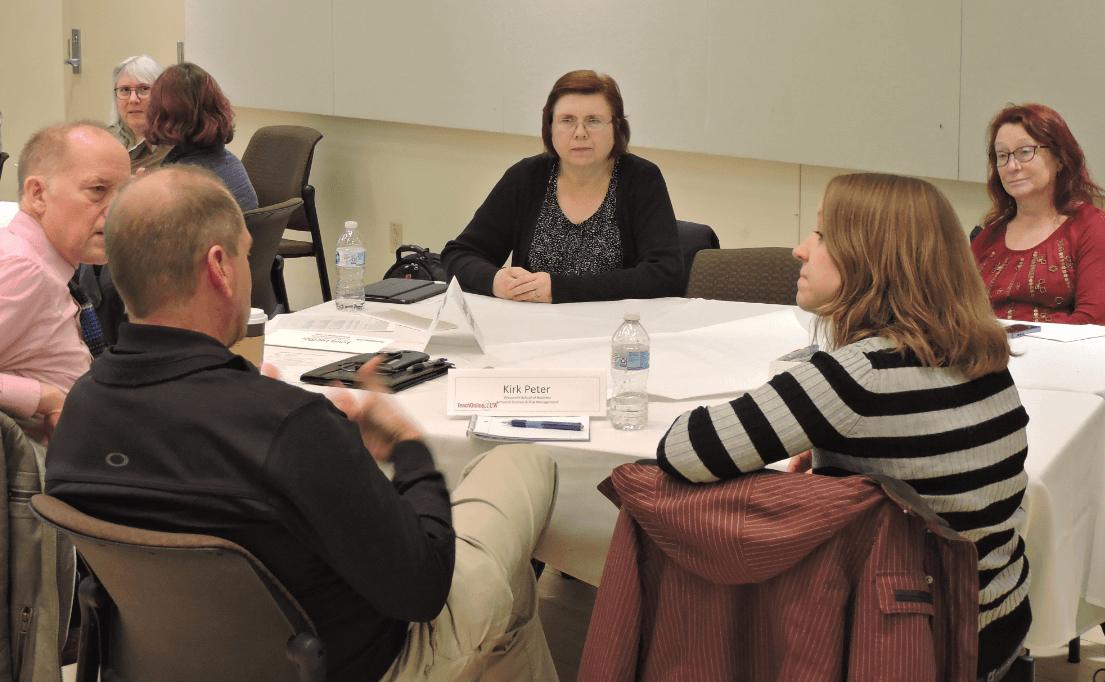
Teaching an online course is very different from teaching in a face-to-face classroom, and the transition from one to the other can be challenging. That’s why the University of Wisconsin-Madison offers TeachOnline@UW, a learning community that shares best practices for online course design and teaching.
Open to UW-Madison faculty and instructional staff, this free program prepares participants to design and teach rigorous online courses using research-based best practices. Its two courses put instructors in the role of online students. The first course focuses on planning and designing an online course, while the second centers on course facilitation and management. Participants may complete one or both courses.
Over the last four years, 135 instructors have participated in TeachOnline@UW and used its strategies to teach more than 300 online courses for approximately 14,000 students. Participants value gaining knowledge that can directly improve their online courses. In fact, 100% of them have indicated they are satisfied with the program.
Peter van Kan, an associate professor in the Department of Kinesiology, is one of these satisfied participants. He says TeachOnline@UW showed him that online courses can be just as effective as face-to-face courses.

“The active learning approach has renewed and enhanced my enthusiasm, interest, and enjoyment of teaching,” he says. “I have definitely gained confidence in my ability to produce a quality online course.”
Explore collaboratively
TeachOnline@UW participants also attend discussions about implementing what they learn and experience. The discussions, which take place face-to-face or via webinar after each online course module, include instructor colleagues and facilitators who are instructional design experts.
These conversations provide a supportive environment to work through challenges associated with online teaching and learning, as well as a space to share strategies and success stories. In fact, many participants have noted that TeachOnline@UW has been their only opportunity to meet with others who teach online and discuss challenges and opportunities specific to their online courses.
This collaboration between instructors and instructional designers from across campus is another reason for the program’s success. So far, instructors from 14 schools and colleges and 71 departments have completed TeachOnline@UW, building a community of online teaching experts at UW-Madison.
Evelyn Howell, a professor in the Department of Planning and Landscape Architecture, says TeachOnline@UW has energized her online teaching, motivated her to try new instructional strategies, and connected her with other online instructors who can provide inspiration and insights.
“I have discovered some wonderful colleagues who are teaching online courses all over campus,” she says.
Learn experientially
In addition to experiencing what it’s like to be online learners, participants learn by observing as facilitators model the best practices shared in the courses. Facilitators often identify the methods and technologies they’re using, why they chose these methods for a particular activity, and how to use them as effectively as possible.

Tim Paustian, faculty associate in the Department of Bacteriology, called participating as an online student a “transformative experience” that showed him the importance of building community in online courses.
“The methods I was taught in TeachOnline@UW make it much more likely that I’ll create a community that increases student participation,” he says, “and I feel much more confident about going into my first online teaching experience.”
Other benefits include building confidence in one’s online teaching, learning how to increase student participation, and finding ways to manage time effectively in online courses.
Heather Kirkorian, an associate professor in the School of Human Ecology who teaches high-enrollment online courses, says TeachOnline@UW provided many valuable tips, including strategies for handling time-intensive activities like grading writing exercises.
“One-paragraph discussion prompts can help students connect what we’re talking about to current events, a big issue in the world, or something in their own experiences,” she says. “I’ve been really impressed with what our students will do in a 200-word discussion post with a well-constructed prompt, things I think I’ve never seen them do in a five-page research paper.”
Apply now
TeachOnline@UW participants receive a stipend for taking part in the program ($750 for completing one course, $1,500 for completing both). Spots are still open in the fall Plan & Design course. The deadline to apply is July 31.
For more information about TeachOnline@UW, contact program manager Karen Skibba at karen.skibba@wisc.edu.
Pictured above: Participants collaborate with instructional design experts from across campus to share best practices for online course design and teaching.